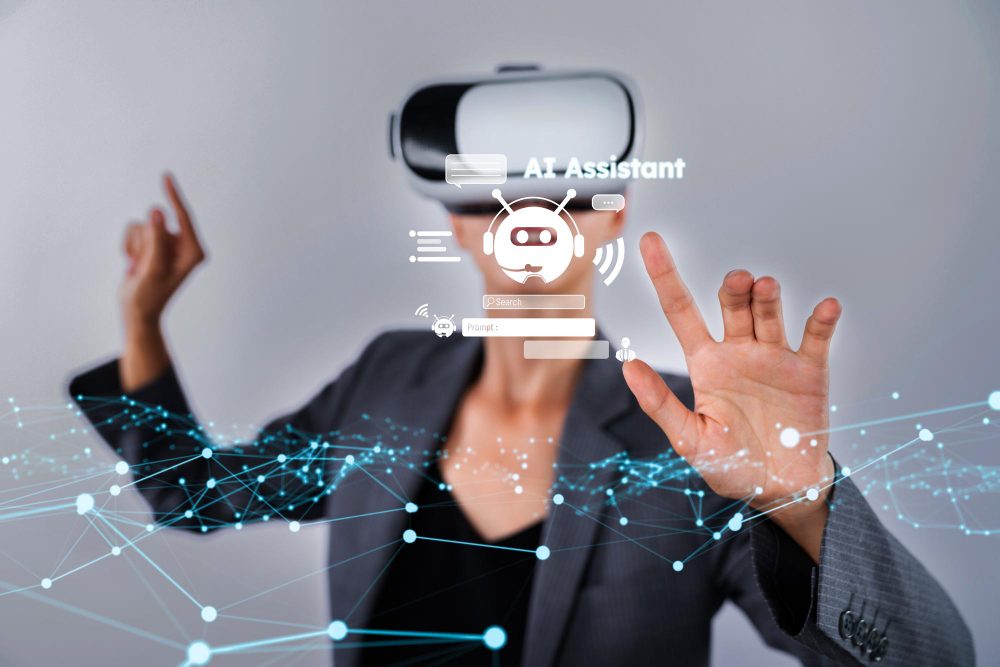As an entrepreneur, you will most certainly want to spend on the best for business and try to capitalize on the benefits of e-commerce web development. However, the most difficult part may not be the evidence acquired by the firm in the adoption of e-commerce web development, but keeping abreast of the trends that will come up in 2025 with new technology and changes in consumer behavior.
Knowledge of emerging trends, especially in e-commerce web development, will also enable you to develop more attractive, efficient, and profitable online stores than those that will be in the future. So dive into these 2025 top trends.

1. AI-Powered Personalization
AI algorithms will be applied in 2025 e-commerce web development to personalize experiences for users. Typically, using these algorithms involves collecting data on customers to create suggestions for products, customizing homepage layouts, and enabling targeted marketing messages according to an individual customer based specific behavior or purchase history.
To illustrate, AI dynamically adjusts product suggestions based on its computation concerning an individual visitor, making it likely that one would continue to the conversion stage. AI chatbots also add to customer support activity by giving every customer instant availability, including weekends and holidays. Personalized AI personalization has indeed become a feature to stay for companies competing in online commerce.
2. Progressive Web Apps (PWAs) for Seamless Experiences
Progressive web applications will sweep e-commerce web development by 2025. It’s fast; it’s offline-browsed; and it’s push-notified, while no installed application is required from the end of users. The major reason for this kind of technology improvement in user experience has been on mobile devices. Mobile commerce is growing rapidly, and by adopting PWAs, businesses are going to have higher engagement rates and speedier page downloads, along with better rankings in SEO.
3. Voice Commerce Integration
Voice-shopping is more accessible than ever, with the aid of smart assistants, including Amazon Alexa, Google Assistant, and Apple Siri. In 2025, voice commerce integration will change the playing field of e-commerce web development.
Through voice commands, customers can search for a product, place their orders, and track the best shopping experience for any individual. Website optimization for voice search in developing voice-enabled shopping capabilities will enhance accessibility and attract shoppers with just that flair for technology.
4. Augmented Reality (AR) for Interactive Shopping
Augmented Reality is transforming the way customers experience products online. Customers will be able to see how any product will look in their environment before making a purchase-whether that is through furniture in their living room or clothing draped over their body.
The reliance on AR as part of e-commerce web development will significantly increase in 2025, particularly in areas like fashion, home décor, and cosmetics. Retailers who give AR features will cut return rates and increase confidence among customers, translating into the competitive edge for retailers.
5. Enhanced Payment Options and Security
Good and secure flexible payment methods provide customers trust and comfort. E-commerce web development for 2025 will include more payment channels, including digital wallets (such as Apple Pay and Google Pay), Buy Now Pay Later (BNPL), and even cryptocurrency.
Adopting a security technology biometrics (fingerprint, facial recognition) and tokenization, will also become standard to secure user data and reduce fraud. This will also increase conversion rates, complemented by loyalty-building long-term customers due to having secured user-friendly payment systems.
6. Headless Commerce Architecture
Most traditional e-commerce platforms tightly bind the front end (user interface) and back end (server, database). On the other hand, headless commerce separates these two layers, providing greater flexibility in delivering content and experiences via several channels.
Headless commerce is going to be one of the well-talked-about trends in e-commerce web development by 2025, giving brands the possibility of having the same shopping experience across websites, mobile applications, social media, and IoT devices. Modular construction significantly speeds innovation and customization and makes businesses very adaptable to ever-changing consumer needs.
7. Sustainability-Focused Web Development
It is no longer just a niche concern: sustainability now has a big say in purchase decisions. Most consumers today prefer to buy from brands that show a commitment to the environment.
Increasingly, e-commerce web development will, in 2025, adapt sustainable approaches such as energy-efficient websites and the clear disposition of information on environmentally friendly products. Green hosting services and carbon footprint calculators on e-commerce sites are also becoming part of the normal repertoire, bringing brands closer to the values of the consumers.
8. Advanced Analytics and Data-Driven Insights
Data is the soul and substance behind all successful e-commerce strategies. Advanced analytics that will be incorporated directly into e-commerce web development platforms in the year 2025 will go a long way in helping companies better understand customer behavior, stocks, and marketing performance, thereby bringing insight at a whole new level.
Retailers will have better decision making and more rapid responses to market trends by real-time dashboards, predictive analytics, and AI-based reporting.
9. Omnichannel Shopping Experiences
Today, consumers desire a seamless experience when shopping online, in-store, or via other social media. Omnichannel commerce can integrate the points of an individual brand in many locations.
E-commerce web development in 2025 will focus largely on building platforms to tether physical stores, mobile applications, marketplaces, and social platforms seamlessly. Click-and-collect, real-time inventory syncing, and unified customer profiles will become important elements.
10. Social Commerce Integration
Social media like Instagram, Facebook, and TikTok have become important sales platforms. Social commerce features directly injected into these sites will be one of the biggest trends expected in 2025.
The company will integrate shoppable posts, live shopping events, and user-generated content at its online storefront, distances consumers from discovering and buying products. This will consummate social media and e-commerce web development and stretch out to boost both engagement as well as sales.
Conclusion
E-commerce web development promises a bright future, full of innovations. Any business that adapts to changes-including adopting AI personalization, PWAs, voice commerce, augmented reality, safe payments, headless architecture, sustainability, advanced analytics, omnichannel integration, and social commerce-would likely flourish within 2025 and beyond.






